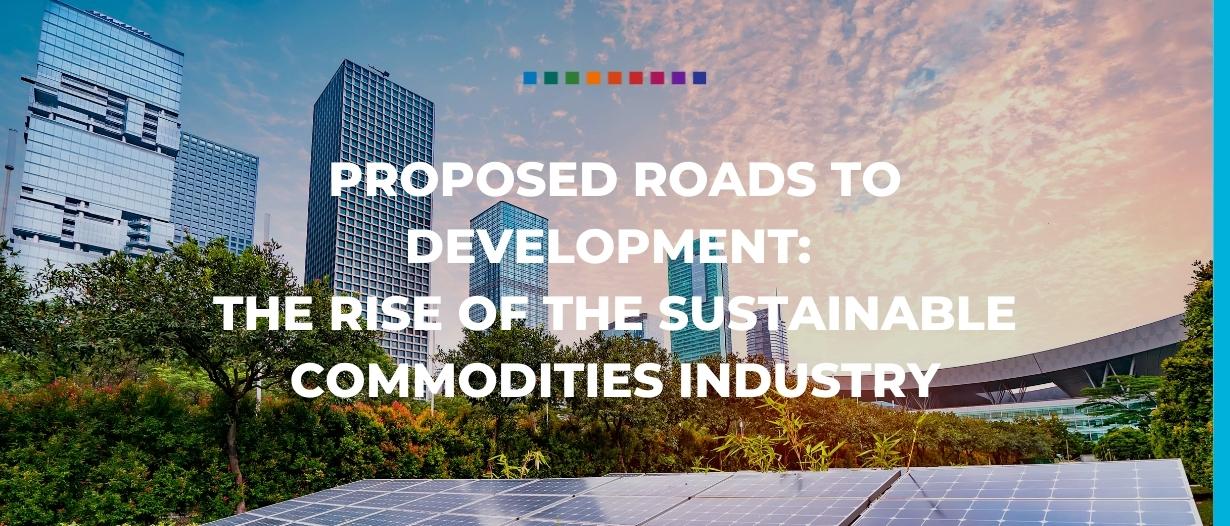Humanitarian crises and the COVID-19 pandemic have shaken major economies, necessitating a paradigm shift in the way we produce, trade, and consume.
With sustainable development as a proposed solution, investment avenues in sustainable commodities (SC) have gained more impetus than ever.
Sustainable commodities are commodities that are produced and traded in order to enhance social, environmental, and economic development.
The idea is to have business models and supply chains in place so as to allow an ecosystem that puts equal importance on these three pillars of sustainable development.
In contemporary corporate parlance, the sustainability drive is underlined by adoption of environmental, social, and governance (ESG) policies.
Since the introduction of an ESG framework by the United Nations (UN) at the beginning of 2005, the adoption of the same by various nations has gathered considerable momentum.
Climate disasters, rising inequality, and soaring costs have changed the way companies now perceive risk, leading them to adopt ESG risk management practices.
Innovations in technology – such as blockchain, artificial intelligence (AI), machine learning (ML), and biotechnology – have been the main drivers in mitigating these risks.
For example, UPS and De Beers are using blockchain to reduce their carbon footprint; Walmart is exploring the deployment of drones to optimise distribution networks; and BASF and Ford are using 3D printing to reduce waste, improve resource efficiency, and rationalise inventory.
Walmart and Zipline are teaming up to bring their own version of drone delivery to the U.S. https://t.co/u7DTUkMJvh pic.twitter.com/yePqBV4cW0
— CNBC (@CNBC) January 16, 2021
Carmaker Audi and Global Bioenergies (a biotech company involved in research of biofuels) have partnered to produce gasoline from sustainable sources such as wheat straw and wood chips.
The Swiss firm Clariant is also developing methods to turn agricultural waste into biodiesel in collaboration with ExxonMobil.
According to a 2015 study by Oxford University, following ESG practices in an organisation resulted in better operational performance in 88% of companies, and better stock performance in 80% of companies.
It also lowered the cost of capital for 90% of companies.
Companies with high sustainability scores showed better operational performance, less investment risk, and higher resilience.
As per the Sustainable Procurement Barometer, a report by the Stanford Graduate School of Business, sustainability-related practices have helped firms improve their resilience and lower their risk during the pandemic.
In the last few years, for example, Nestle has invested in and developed a Water Sanitary and Hygiene (WASH) policy, and has worked closely with farmers to improve their productivity and help alleviate poverty.
Sustainability gathers momentum
The sustainability movement has therefore witnessed a gradual and consistent rise in investments and green capital flow in the past decade.
Last year around COP26, the Global Financial Alliance for Net Zero (GFANZ) announced that more than 450 firms in the financial services sector across 45 countries have committed to delivering over $100 trillion in investment over the next three decades.
As per the Global Sustainable Investment Review 2020, sustainable investment assets globally grew 15% over the past two years to reach $35 trillion.
#Sustainableinvestment is increasingly being defined not just by its strategies, but by the short & long term impacts that investors are having, according to the 2020 Global Sustainable Investment Review released this week. #gsir
— GSIA (@GlobalSIF) July 22, 2021
Read the report: https://t.co/6XQG487Yfk pic.twitter.com/iOcxT7CCMs
In 2021, sustainable finance bond issuance totaled $859 billion, the highest ever, according to Refinitiv data.
These bonds come with full disclosure with regard to application of funds, hence lowering the risks of greenwashing.
However, caution should be taken when investing in equity instruments or funds that manage equity.
With a groundswell of interest in sustainability driving demand for ESG funds, 500 funds across Europe have been repurposed in 2021, and almost 40% of European Union-based (EU) assets are now classified as sustainable.
However, the performance of these funds appears to be quite volatile, and oscillates with the wider market.
In January 2022, for example, the 10 biggest actively managed ESG funds tracked by Morningstar reported an average 9.2% loss for the month – much steeper than the 5.3% drop in both the S&P 500 and MSCI World indices
However, the under-performance of these funds could be attributed to skewed allocation in tech stocks (purported to be ESG-compliant).
Some fund managers have therefore strategised to allocate funds into other industries – such as aluminum, iron, logistics, and pharmaceuticals – where the price/value discovery is low, and where decarbonisation and green chemistry may act as tailwinds.
ESG funds – confidence and prospects
To boost investor confidence and avoid ambiguity, governments and regulators have started drawing up ESG frameworks for investment and fund allocation.
The Securities and Exchange Board of India, for example, has rolled out a series of rules in the past year, and has created a standardised ESG framework for the country’s top 1,000 listed companies.
In the US, the Securities and Exchange Commision (SEC) requires all public companies to disclose information that may be material to investors, including information on ESG-related risks.
These guidelines not only enable investors to make informed decisions, but also incentivise them to confront environmental and social risks.

ESG metrics and ratings
While building up a portfolio incorporating sustainable commodity-based securities, it is important that an ESG evaluation takes place.
The evaluation metrics could broadly be classified under:
- Origin and location
- Corresponding supply chain
- End usage industry
Such an evaluation would give a clear idea of a commodity’s carbon footprint through its lifecycle, and of its impact on the value chain (i.e from production to final end user) in the geographies impacted by It.
However, to build a more robust model for evaluation, other parameters of a business – such as resilience, resource utilisation, business ethics, human capital, occupational health and safety, land and biodiversity, and product governance – could also be factored in.
Since the above parameters are not sector agnostic and may vary, a rough analysis may not be indicative, and hence the evaluation is largely left to asset managers, stock exchange regulators, rating agencies, and analysts.
With initiatives such as the Commodities Genome Project – which establishes a common language covering the physical attributes of the commodity and also its ESG footprint – could act as a catalyst in ESG evaluation metrics.
This, in turn, would help us to arrive at a common acceptable international standard for all commodities, and hence the financial instruments deriving value from it.
With ESG ratings agencies in vogue, this should usher in new retail investors to a more informed era of ESG investment.
Though economies are now grappling with both ESG commitments and GDP growth targets after COVID-19, we can still strike a balance towards a more sustainable future.

























